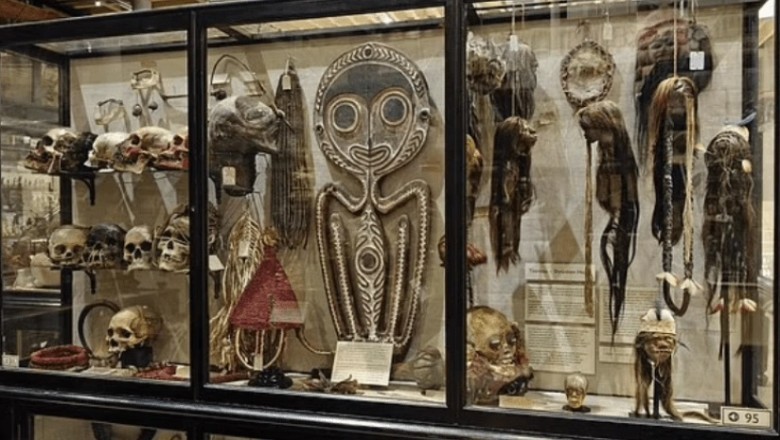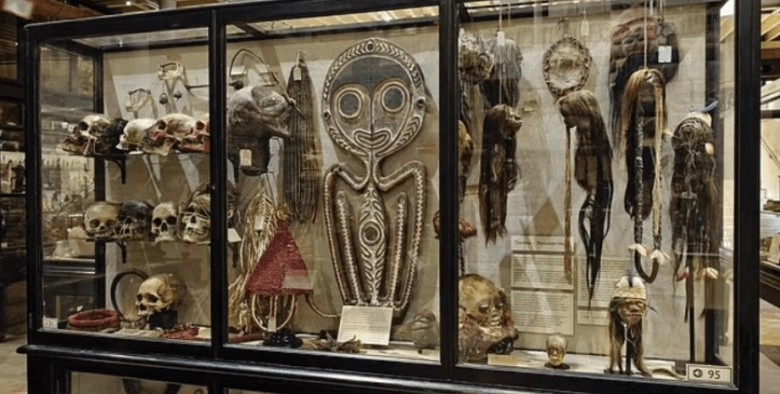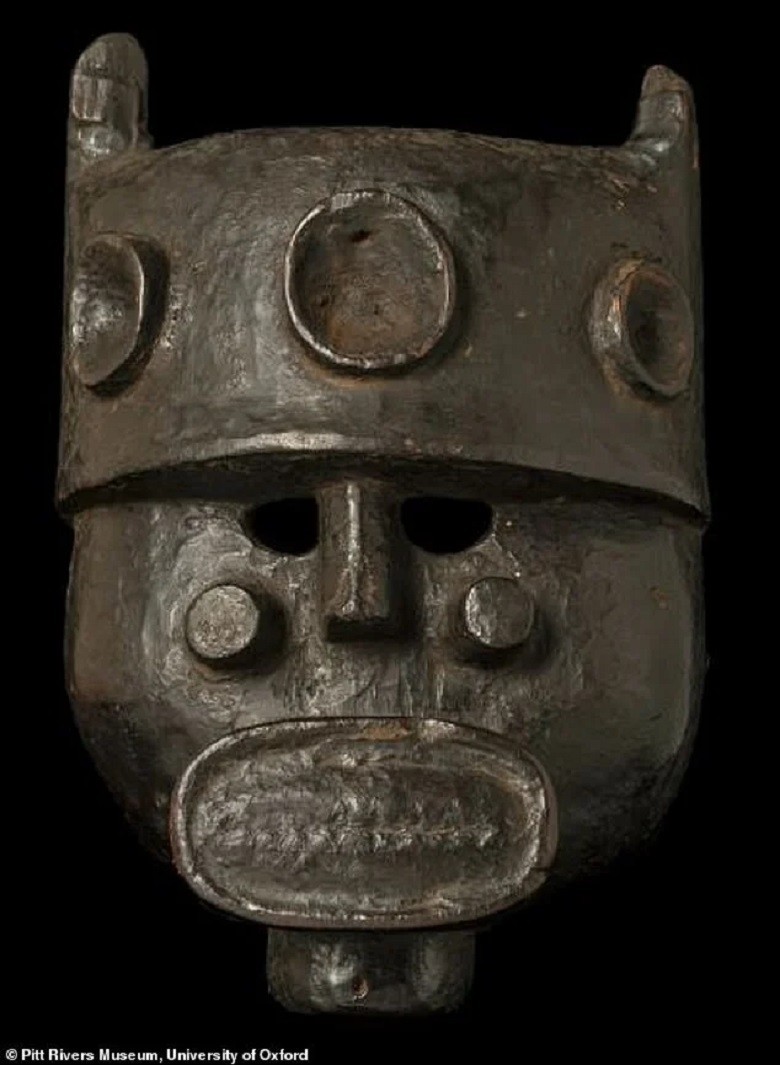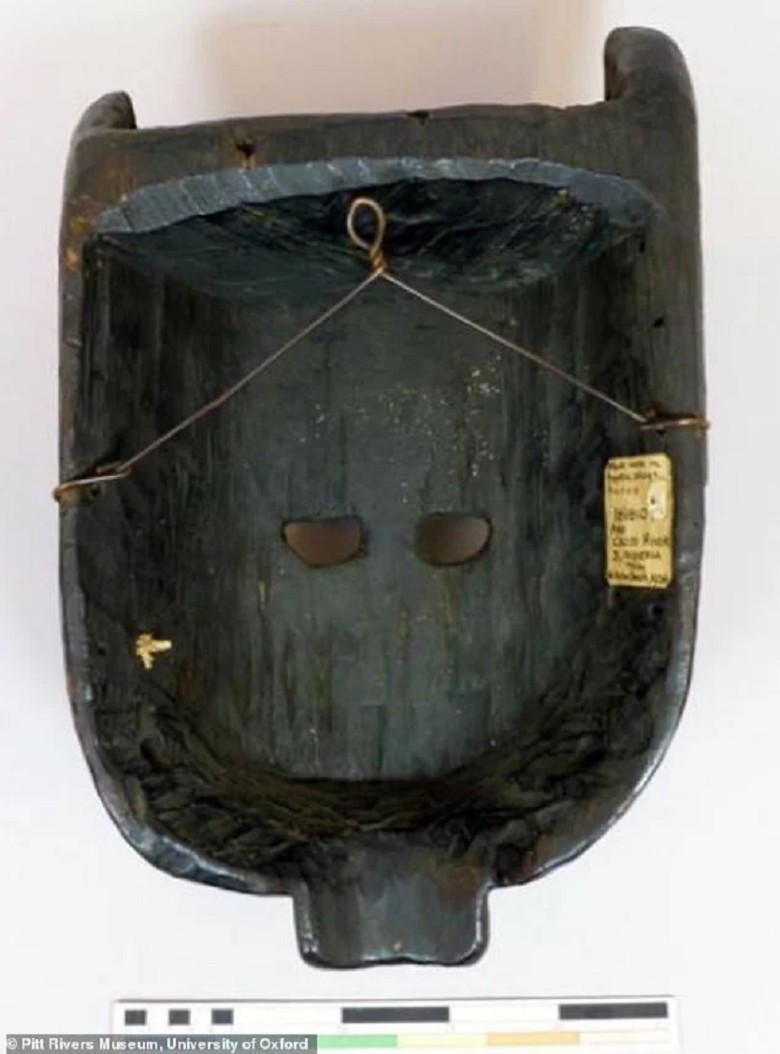
views
Forbidden African Mask Unveiled: A Tale of Tradition, Taboos, and Modernity
In the heart of the prestigious Pitt Rivers Museum at Oxford University, whispers of mystery and controversy began to swirl around a particular wooden mask carefully tucked away from public view. This wasn't just any ordinary mask; it belonged to the Igbo people of Nigeria, carrying with it centuries of tradition, mystique, and a strict rule that it was forbidden for women to behold its visage.

For generations, the Igbo people had revered this wooden artifact as a symbol of power, a conduit to the spirit world, and a key component in their sacred ceremonies and rituals. Only men of the tribe were deemed worthy to wield its enigmatic powers, while women were relegated to the periphery, forbidden from laying their eyes upon its carved features.
The decision to conceal the mask from public display and accompany it with a sign cautioning about "cultural safety" had sent ripples of curiosity and controversy through the hallowed halls of the museum. The staff's actions had unintentionally unearthed a cultural fault line, pitting tradition against modern sensibilities, gender exclusivity against inclusivity.
As news of the forbidden African mask spread, reactions poured in from all corners, each voice adding a layer of complexity to an already intricate narrative. Art historian and writer, Ruth Millington, known for her incisive commentary on cultural issues, was among the first to weigh in on the unfolding scandal.
“To deny all women access to something that is considered taboo in one particular culture seems extreme to me,” Ruth remarked, her words resonating with a fervor that mirrored the growing sentiment among visitors and scholars alike. The clash between respecting age-old traditions and embracing contemporary values had brought the museum's ethical stance into sharp relief.
The tension between cultural preservation and gender equality simmered beneath the surface, threatening to boil over into a full-fledged debate on the role of museums in safeguarding heritage while championing inclusivity. The Igbo mask, once a symbol of mysticism and reverence, now stood as a testament to the shifting sands of cultural understanding and interpretation.
Against this backdrop of discord and contemplation, the Pitt Rivers Museum found itself at a crossroads, forced to navigate the treacherous waters of tradition and progress. The decision to veil the mask from female eyes had inadvertently sparked a conversation that transcended boundaries, both geographic and ideological.

In the corridors of academia, scholars debated the ethical ramifications of enforcing gender-based restrictions on cultural artifacts, questioning the very foundation of museum practices in a rapidly changing world. Should museums be gatekeepers of tradition, preserving the sanctity of ancient customs, or should they be beacons of enlightenment, promoting open access and dialogue?
The forbidden African mask, with its enigmatic aura and storied past, had become a flashpoint for a broader discourse on cultural heritage, identity, and representation. It demanded introspection and deliberation, challenging visitors to confront their own biases and preconceptions in the face of unfamiliar traditions.
As the controversy unfolded, the Pitt Rivers Museum stood as a microcosm of the complexities inherent in the global conversation on culture, tradition, and diversity. The clash of values, the tug-of-war between old and new, the delicate balance between reverence and rebellion—all played out against the backdrop of this seemingly innocuous wooden mask.
Visitors flocked to the museum, eager to catch a glimpse of the forbidden artifact, their curiosity piqued by the aura of mystery that surrounded it. Lines snaked through the exhibition halls, each spectator eager to decipher the secrets hidden within the mask's intricate carvings, each onlooker grappling with the weight of tradition and the call of progress.
Outside the museum's walls, the story of the forbidden African mask spread like wildfire, igniting debates on social media, drawing in audiences from across the globe. The tale of a culture clash, a clash of values, a clash of genders—it captured the zeitgeist, encapsulating the struggles and triumphs of a world in flux.
In the midst of this whirlwind of fervor and fascination, one question loomed large: how do we honor the past while embracing the future? How do we navigate the choppy waters of tradition and modernity, of exclusivity and inclusivity, of taboos and freedoms?
The answer, it seemed, lay not in absolutes but in dialogues, in conversations that transcended borders and boundaries, in a willingness to listen and learn from one another. The forbidden African mask, with its silent presence and weighty legacy, served as a potent reminder of the complexities of human culture, the richness of diversity, and the power of shared experiences.

As the dust settled and the controversy waned, the wooden mask remained a focal point of reflection and introspection, a symbol of the universal truths that bind us all together. In its enigmatic gaze, in its timeless beauty, in its whispered secrets, the forbidden African mask beckoned us to look beyond the surface, to delve deeper into the mysteries that define us as individuals and as a collective humanity.
And so, the story of the forbidden African mask faded from the headlines, but its lessons lingered on in the hearts and minds of those who had been touched by its presence. In a world fraught with division and discord, the mask stood as a silent sentinel, a reminder of the power of understanding, respect, and empathy in bridging the gaps that separate us.
As visitors filed out of the museum, their minds abuzz with thoughts and questions, one thing was clear: the forbidden African mask had left an indelible mark on their souls, an imprint of a culture, a tradition, a legacy that transcended time and space. And in that fleeting moment of connection, of communion with the unknown, they had discovered a truth as old as humanity itself: we are all bound by the threads of history, woven together in a tapestry of shared experience and belonging.












Comments
0 comment